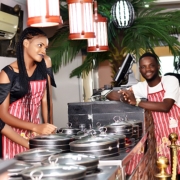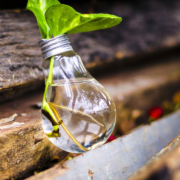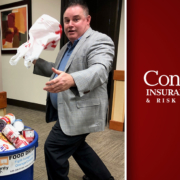November 15th is National America Recycles Day in association with Keep America Beautiful. The goal of this day is to learn what materials are recyclable in your community, reduce waste, buy products made from recycled materials and share with friends and family the positive effects of recycling. You can take the pledge here.
Currently, the national recycling rate is only 34%. Americans throw away over 200 million tons of trash each year. It is estimated that 75% of the trash that Americans throw away is actually recyclable. Did you know that a glass bottle can go from curb to store shelf in about a month, yet we toss enough glass bottles in the trash every year to fill up a line of semi-trucks from Los Angeles to New York City, and back, every year?1 According to Statista, America produced 262.4 million tons of municipal solid waste in 2015. Of that 67.8 million tons were recycled. Unfortunately, this means about 195 million pounds of waste was still destined for landfills.2
Many items are thought to be recyclable but are actually not. Here are a few:
Disposable coffee cups: These cups are lined with a liquid-proof polyethylene which is difficult and expensive to separate from the recyclable cup.
Pizza box: These may or may not be recyclable depending on the oil and grease content. If there is a minor amount it should be okay, however, if the cardboard is completely saturated it is no good. The oil and grease go into the cardboard and belongs in the trash. But, check the top of the pizza box. Clean lids can be placed in the recycle bin!
Plastics with oil or vinegar: Many plastics are stamped with a recycle imprint on them, but if they are filled with oil or vinegar they are no longer good to go in the recycle bin. This is usually the case for pre-packaged salads or other meals. If, however, you are able to rinse out the food residue it can be saved!
There are several unique items that are created using recycled goods. These include:
Asphalt: Some asphalt companies are grinding up discarded roofing shingles. Also, glass bottles can be used as the reflective markers lining roads.
Plastic bottles: These bottles can be used to make a wide array of new products including t-shirts, jackets, sleeping bags, playground equipment, park benches, lawn furniture and many other items.
Paper Products: Things like newspaper and copy paper can become cat litter, building insulation, sheetrock, toilet paper, and facial tissues.
Electronic recycling is even more critical. Electronic waste represents about 2% of America’s trash in landfills, yet is responsible for about 70% of toxic waste according to Dosomething.org.3 According to the EPA, electronic waste is the fastest growing municipal waste stream in the United States.3 Properly disposing of e-waste helps prevent lead and other toxic compounds contaminating our landfills and groundwater. Most electronics encompass many different precious metals. Americans alone toss out over $60 million worth of gold and silver in electronics every year.3 Many local businesses sponsor free electronic waste drop-off events.
If we all pitch in a little we can make a huge impact.
At Conrey Insurance Brokers and Risk Managers, we strive to help make the world a better place by informing you of topics that are important to us all. That’s the Conrey difference. If you have questions about coverage, we’re always here to help. Call us at 1-877-450-1872 or contact us here, and experience The Conrey Difference for yourself!
- https://www.dosomething.org/us/facts/11-facts-about-recycling
- https://www.statista.com/statistics/193923/recycling-of-us-municipal-solid-waste-since-1960/
- https://www.dosomething.org/us/facts/11-facts-about-e-waste



